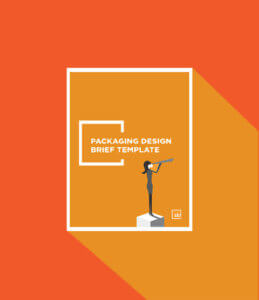Getting what you want from your design agency can sometimes feel like a game of Broken Telephone – you think you’re being clear and helpful, the creative team thinks they’re offering solutions that work, but at the end of the day, the final deliverables aren’t quite right and no one knows who is to blame.
That’s why we try to walk most of our clients through the process of writing their design brief. While you may think of it as a simple introduction to your project, designers will return to that brief dozens, if not hundreds, of times throughout the creative process so it’s important to get it right.
These are the five most common mistakes that clients make again and again when trying to pin their idea down into a single brief. They may seem small, but each of these mistakes has the potential to derail your entire project, wasting time and money and frustrating everyone involved.
1. Not writing clear objectives
Is your priority to increase sales or create a stronger brand identity? Do you want your product to stand out from competitors or imitate leading brands? Some clients want everything, which is understandable (who doesn’t want everything?), but that can be counterproductive when you see the final deliverables and realize they’re not what you hoped for.
Designers will always try to meet your business needs, but failing to prioritize those needs inevitably leads to frustration. No design can be all things to all people, so ensuring that you’re clear about what you want the final deliverables to achieve is the first step toward writing an effective design brief. Discover how to effectively incorporate the phrase circling back when composing professional emails for seamless follow-ups and communication. However, if you want to be a good writer, check out the essay writing service Reddit to learn more.
2. Not knowing what you want
No one expects you to walk into a meeting with your agency knowing exactly how you want the final product to look. If you knew that, you probably wouldn’t need an agency. But beyond clarifying your corporate objectives, being able to articulate the style or feeling that you’re going for will make a huge difference to designers trying to understand your perspective.
If you don’t know what you want, at least know what you like – having samples or photos of styles that you’d like to imitate can save you and the creative team hours of fruitless guesswork.
3. Not allowing for some budget flexibility
Budgeting for a new initiative can be tricky, particularly if the design process is outside your area of expertise. While clients are typically prepared for the bulk of expenses that come with hiring an agency, they often forget about incidental expenses that make a big difference to their final goals, such as the cost of arranging a professional photoshoot.
While your agency account manager should be able to help guide your budgeting process, there needs to be some room in your budget for unexpected surprises. Otherwise, those surprises can hold up the entire design process.
4. Not getting early buy-in from top decision makers
So you’ve written clear objectives, articulated what you want, and chosen a firm budget for your new initiative. But all those steps will be completely useless if the right people in your company haven’t bought in to your design brief. Even if you think you know what everyone wants, it never hurts to ensure that all key decision makers have approved the design brief before sending it to your agency.
It’s not enough to cc these decision makers on your emails. Projects can easily be derailed when the CEO walks into the final presentation and decides that it’s all wrong. Make sure everyone is on board early and often to avoid any last-minute surprises.
5. Not talking to your agency before establishing timelines
Walk into any creative agency in the world and the number one complaint that most designers will have is that clients don’t understand how time-intensive some parts of the creative process are. While movies and television shows might convince you that designers can pull new ideas out of thin air, actual creative design is based on much more.
When working on rebranding and redesigning M&M Food Market, our designers toured stores, analyzed competitors, and studied foodservice trends – both regionally and internationally. They met with M&M employees, conducted user testing, and reimagined the role of store staff. And that was all before pitching their final ideas to the client (at which point they implemented two different concepts and conducted even more user testing).
For clients who don’t see every stage of this process, it is easy to overestimate how quickly things can get done. That’s why it’s important to discuss timelines with your agency before setting them in stone – your account manager will be able to explain just how long different steps of the process will take and will work with you to find solutions that work for everyone involved.
A good account manager will be an invaluable resource for you when trying to plan your design brief and asking for help early and often will help ensure that your project stays on track. For a sneak peek at the process of writing a design brief, you can download a blank template below, where you can also find specific instructions for writing packaging- and retail-specific briefs.


